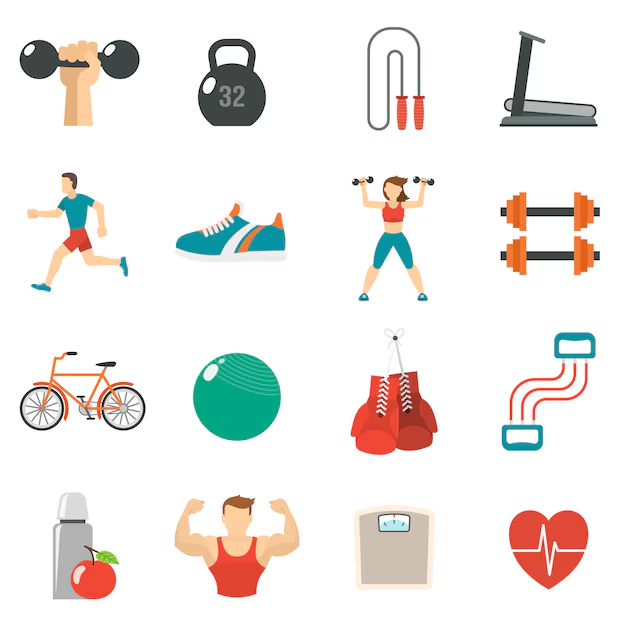Navigating Chronic Pain: A Multifaceted Approach to Relief and Well-being
Chronic pain, defined as persistent pain lasting longer than three months, significantly impacts an individual's physical, psychological, and social functioning. This condition transcends a simple somatic experience, encompassing emotional distress, reduced quality of life, and potential for disability. This article explores a comprehensive strategy for managing chronic pain, drawing upon established medical models and holistic approaches. Key concepts include the biopsychosocial model of pain, which emphasizes the interplay of biological, psychological, and social factors in the experience of pain; the gate control theory of pain, which explains how the nervous system processes and modulates pain signals; and principles of self-efficacy and behavioral activation to promote adaptive coping mechanisms.
- Comprehensive Medical Assessment and Management: The initial and crucial step involves seeking a thorough evaluation by a healthcare professional specializing in pain management. This necessitates a detailed assessment of the pain's characteristics (location, intensity, duration, quality), associated symptoms, and medical history. A multidisciplinary approach, possibly involving physicians, physical therapists, psychologists, and other specialists, is frequently beneficial, aligning with the biopsychosocial model's holistic perspective. The treatment plan must be individualized, considering the patient's specific needs and preferences, drawing upon evidence-based guidelines for pain management. This may involve pharmacological interventions, targeted at addressing the underlying biological mechanisms of pain.
- Therapeutic Exercise and Physical Therapy: Regular, appropriately prescribed exercise, guided by physical therapists, plays a vital role in chronic pain management. Exercise strengthens muscles, improves joint flexibility and range of motion, and releases endorphins, which possess natural analgesic properties. The choice of exercises should be carefully tailored to the individual's capabilities and pain tolerance, adhering to principles of progressive overload and avoiding exacerbation of symptoms. Physical therapy interventions also encompass manual therapy techniques to address musculoskeletal impairments and promote functional restoration.
- Psychosocial Interventions: Addressing the psychological and social dimensions of chronic pain is crucial for comprehensive management. Cognitive Behavioral Therapy (CBT) techniques can help individuals challenge unhelpful thoughts and beliefs about pain, develop coping skills, and improve self-efficacy in managing their condition. Mindfulness-based interventions, such as meditation and deep breathing exercises, can help regulate emotional responses to pain and improve overall well-being. This is supported by the gate control theory, where psychological factors can modulate the perception of pain. Participation in support groups fosters a sense of community and provides opportunities to share experiences and learn effective coping strategies. Moreover, establishing a strong support network, comprising family, friends, and healthcare professionals, enhances emotional resilience and promotes adherence to the treatment plan. Applying the principles of social support and behavioral activation encourages engagement in enjoyable activities despite the presence of pain.
- Pharmacological and Non-pharmacological Modalities: Medication can be a valuable component of chronic pain management, acting on various mechanisms to reduce pain perception and inflammation. This may involve analgesics, anti-inflammatory drugs, or other specialized medications. However, a multi-modal strategy is usually preferred. Non-pharmacological approaches, such as heat and cold therapy, transcutaneous electrical nerve stimulation (TENS), and acupuncture, can provide additional pain relief and should be considered as part of a comprehensive treatment approach. The decision regarding which modalities to employ is based on individual needs, clinical assessment, and the principles of evidence-based practice.
- Lifestyle Modification and Self-Management: Implementing lifestyle changes to promote overall well-being is essential. This includes following a nutritious diet, prioritizing adequate sleep, and engaging in stress-reduction techniques. Maintaining a healthy weight reduces strain on weight-bearing joints, promoting comfort and alleviating symptoms. Regular sleep patterns improve mood, reduce stress, and enhance the body's ability to repair tissues. Effective self-management is crucial, encouraging regular monitoring of pain levels, identification of triggers, and consistent application of prescribed interventions.
- Assistive Devices and Adaptive Strategies: Assistive devices, such as canes, braces, and ergonomic tools, can significantly improve function and reduce pain by minimizing strain on the body. Adaptive strategies should be tailored to the individual's specific needs and limitations to optimize their ability to perform daily activities.
- Ongoing Monitoring and Adjustment: Regular follow-up appointments with the healthcare team are vital for evaluating treatment effectiveness, adjusting the treatment plan as needed, and addressing any new concerns. Open communication between the patient and healthcare professionals ensures a collaborative and personalized approach to chronic pain management. The process is iterative, with ongoing monitoring and adjustment of treatment strategies to achieve optimal pain relief and improve quality of life.
Conclusions and Recommendations
Effectively managing chronic pain requires a holistic, multidisciplinary approach integrating medical, psychological, and social interventions. This strategy aligns with the biopsychosocial model and emphasizes the interconnectedness of biological, psychological, and social factors in the experience and management of pain. The importance of individualized treatment plans, regular monitoring, and open communication between patients and healthcare providers cannot be overstated. Future research should focus on refining personalized treatment strategies, developing novel non-pharmacological interventions, and enhancing the understanding of the complex interplay of factors that contribute to chronic pain and its impact on various aspects of an individual's life. Effective self-management strategies and ongoing support systems are crucial determinants of treatment success.
Reader Pool: Considering the multifaceted nature of chronic pain management discussed in this article, what additional strategies or interventions do you believe are necessary for optimizing patient outcomes and improving quality of life?
```






No comments yet. Be the first to share your thoughts!